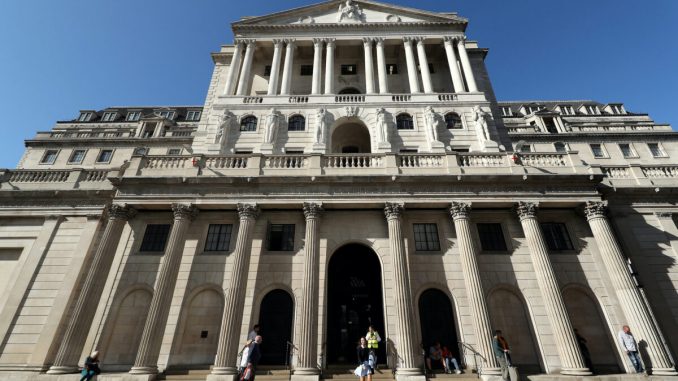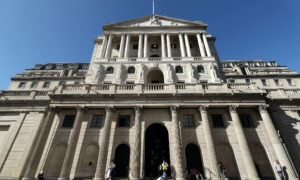

The Bank of England has forecast the economy will grow this year at its fastest pace since the Second World War as Britain stages a vaccine-fuelled recovery.
The Bank predicts gross domestic product (GDP)—a measure of the size of the economy—will rebound by 7.25 percent in 2021 up from its previous prediction of 5 percent and the best year of growth since 1941. It comes after the pandemic saw the UK suffer the biggest drop in output for 300 years in 2020, when it plummeted by 9.8 percent.
The rapid progress of the COVID-19 vaccine rollout and the lifting of restrictions is seeing the economy rebound sharply as consumers spend savings built up over lockdown. The Bank now sees growth reaching pre-pandemic levels at the end of 2021, having previously said it would not recover until the beginning of 2022.
The rosier view for the economy this year came as the Bank’s Monetary Policy Committee (MPC) voted unanimously to hold interest rates at 0.1 percent. Bank governor Andrew Bailey said the brighter outlook was “good news,” but he cautioned against getting “carried away” by the roaring growth figure. He said: “It takes us back to the level of what we had at the end of 2019, pre-COVID.
“That’s good news … but it still means that two years of output growth have been lost to date.”
The Bank’s quarterly set of forecasts also show downgrades to the growth outlook for 2022, with growth falling to 5.75 percent from 7.25 percent.
The Bank kept its quantitative easing (QE) programme on hold at £895 billion ($1,242 billion), although one member of the MPC voted to reduce it by £50 billion ($69 billion) given the better recovery prospects.
It revealed it was slowing the pace of QE but stressed this was not as a result of the growth upgrades.
In minutes of the latest decision, the Bank said the third lockdown is set to see GDP fall by around 1.5 percent between January and March—far less severe than first feared.
It also sharply cut its forecasts for unemployment over the year, now predicting that the jobless rate will peak at 5.5 percent down from the 7.75 percent previously forecast.
The extension of the furlough scheme has softened the blow, while the growth rebound is set to see most furloughed employees return to work when it ends.
Bailey said, “New COVID cases in the United Kingdom have continued to fall, the vaccination programme is proceeding apace, and restrictions on economic activity are easing.”
But he warned over “downside risks to the economic outlook” from a potential resurgence of COVID-19 and the possibility that new variants may be resistant to the vaccine.
The rebound will also begin to pare back after 2021, as the boost from pent-up consumer demand fades, while there will be some long-term scarring from the pandemic equivalent to around 1.25 percent of GDP.
Inflation will surge this year to 2.4 percent in the final three months, largely due to energy prices, but the spike will only be temporary and should return to around 2 percent in the medium term, according to the Bank.
The report showed forecasts were based on rates rising by the second quarter of 2023, but no hike is expected soon.
Howard Archer, chief economic adviser to the EY Item Club, said, “While the Bank is clearly more positive about the UK economy in the near-term, the MPC also has significant uncertainties about the longer-term outlook and are seemingly in no hurry to tighten monetary policy.”
By Holly Williams





Be the first to comment